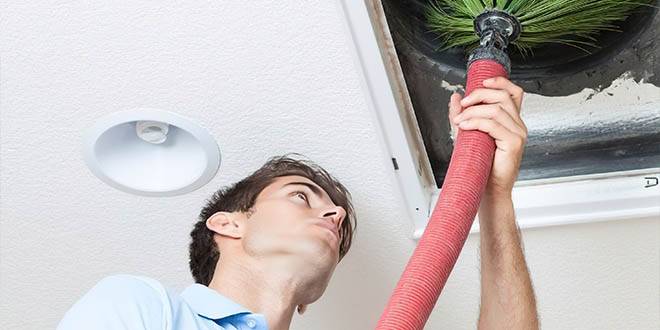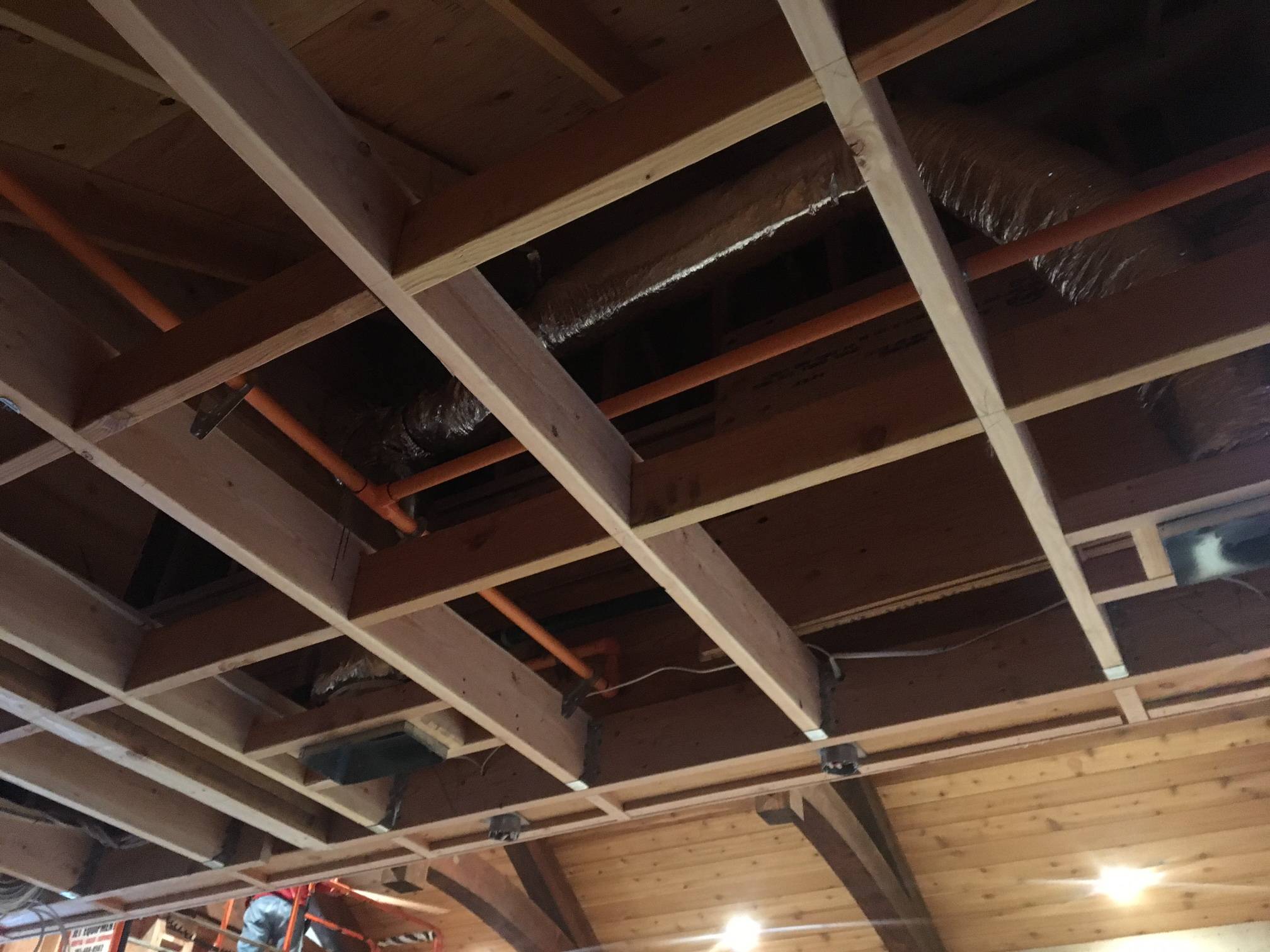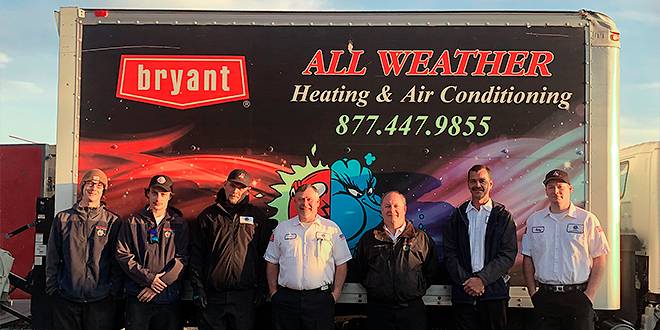
The thought of mold might conjure up images of damp basements or forgotten corners of the attic. But what if this unwelcome guest was silently thriving in the unseen network of your home’s air ducts? This blog post serves as your comprehensive guide to mold in air ducts, providing crucial information you need to identify the problem, understand the potential health risks, and explore safe and effective removal strategies.
We’ll delve into the telltale signs that might indicate mold growth, from musty odors to respiratory issues. We’ll explore the potential health concerns associated with exposure to mold spores and shed light on the importance of addressing the issue promptly. Finally, we’ll guide you through the process of removing mold from your air ducts, emphasizing the importance of professional intervention for ensuring thorough and safe remediation. Breathe easy, arm yourself with knowledge, and take control of your home’s air quality.
Understanding Mold in Air Ducts
Mold in air ducts is more than just a nuisance; it’s a complex issue that affects many homes and businesses, often going unnoticed until it becomes a significant problem. Understanding what mold is, the conditions that allow it to thrive, and the types commonly found in HVAC systems is the first step in combating this issue.
What is Mold?
Mold is a type of fungus that can grow both indoors and outdoors, thriving in moist, warm environments. It reproduces through tiny spores that travel through the air, which can start to grow on surfaces within 24 to 48 hours in the right conditions. Air ducts can provide an ideal environment for mold growth when moisture is present, often due to humidity, condensation, or leaks in the HVAC system.
Conditions for Mold Growth in Air Ducts
Mold growth in air ducts is primarily fueled by:
- Moisture: Whether from high indoor humidity, condensation, or water leaks, moisture is the critical factor for mold growth.
- Organic Material: Dust and other organic materials that accumulate in ducts provide the necessary food source for mold spores.
- Warmth: Warm temperatures in enclosed spaces like air ducts can accelerate mold growth.
Types of Mold Commonly Found in Air Ducts
Homeowners should be aware of several types of mold that can inhabit air duct systems. Each type has its characteristics and potential health risks:
- Cladosporium: This mold can appear olive-green to brown or black and is commonly found on fabrics, under floorboards, and inside air ducts. It can cause respiratory problems and skin irritation.
- Aspergillus: Often light in color, ranging from white to yellow or green, Aspergillus is a common indoor mold that can produce mycotoxins, potentially leading to severe health issues, including lung infections and allergic reactions.
- Penicillium: Known for its blue or green appearance, Penicillium can spread quickly and is often found in water-damaged buildings. It can cause allergic reactions, asthma, and other respiratory issues.
- Stachybotrys: Commonly known as “black mold,” Stachybotrys is slimy and black. It thrives on high cellulose and low nitrogen materials like fiberboard, gypsum board, and paper. Exposure can lead to serious health problems, including breathing difficulties, sinus infections, and fatigue.
- Alternaria: This mold has a velvety texture with dark green or brown hairs and is often found in damp places. It can cause allergic reactions and asthma attacks in susceptible individuals.
Understanding these mold types and the conditions they thrive in can help homeowners and business owners recognize potential mold issues in their HVAC systems before they escalate. In the following sections, we’ll delve into the health risks associated with mold in air ducts and how to identify its presence effectively. At All Weather Heating & Air Conditioning, we emphasize the importance of professional inspections and maintenance to prevent and address mold growth, ensuring your air quality remains at its best.
Health Risks Associated with Mold in Air Ducts
The presence of mold in air ducts poses significant health risks to occupants of both residential and commercial properties. Understanding these risks is crucial for recognizing the importance of prompt and effective mold remediation. Mold exposure, especially on a prolonged basis, can lead to a range of health issues, from mild allergic reactions to serious respiratory conditions. Here, we outline the potential health implications of mold exposure and highlight the importance of maintaining clean air ducts for your health and well-being.
Respiratory Issues and Allergic Reactions
Mold spores, when inhaled, can trigger allergic reactions and respiratory problems in many individuals. Symptoms may include:
- Sneezing and nasal congestion
- Itchy, red, or watery eyes
- Skin rash or dermatitis
- Throat irritation
- Wheezing, coughing, or difficulty breathing
Those with pre-existing respiratory conditions, such as asthma or chronic obstructive pulmonary disease (COPD), may experience exacerbated symptoms or more frequent asthma attacks upon exposure to mold.
Serious Health Conditions
Extended exposure to certain types of mold, such as Aspergillus, can lead to more severe health issues, including:
- Aspergillosis, a condition that can cause infection in the lungs and allergic reactions
- Pulmonary fibrosis, which can lead to scarring of the lung tissue
- Mycotoxicosis, or “mold poisoning,” due to exposure to toxic substances produced by mold
Vulnerable Populations
Particular groups are more susceptible to the adverse effects of mold exposure, including:
Infants and children
- Elderly individuals
- People with compromised immune systems
- Those with chronic lung diseases
The Importance of Clean Air Ducts

Ensuring that air ducts are free of mold is not just about maintaining the efficiency of your HVAC system; it’s about safeguarding the health of everyone who spends time in the affected environment. Regular inspections and maintenance of HVAC systems are essential to prevent mold growth and its associated health risks.
At All Weather Heating & Air Conditioning, we prioritize your health and comfort. Our team of professionals is equipped to conduct thorough inspections and cleanings of your HVAC system, ensuring that your air ducts remain mold-free. Remember, addressing mold in air ducts promptly can mitigate health risks and contribute to a healthier indoor environment.
Identifying Mold in Your Air Ducts
Recognizing the presence of mold in your air ducts early on is key to preventing its spread and safeguarding your indoor air quality. Mold can be elusive, often growing in hidden areas where it’s not immediately noticeable. However, certain signs can indicate its presence in your HVAC system. Here’s how you can identify mold in your air ducts and the steps you should take if you suspect a mold issue.
Signs and Symptoms of Mold in Air Ducts
- Musty Odors: A persistent musty or moldy smell, especially when the HVAC system is running, is a telltale sign of mold growth within the ductwork.
- Visible Mold Growth: In some cases, mold growth can be visible around vent covers, within the ducts, or on other components of your HVAC system.
- Exacerbation of Allergy Symptoms: If occupants experience a noticeable increase in allergy symptoms such as sneezing, coughing, or itchy eyes while indoors, it could be a sign of mold spores circulating through the air.
- Unexplained Health Issues: Persistent respiratory problems, headaches, or dizziness without a clear cause may also indicate poor indoor air quality due to mold.
Professional Inspection and Testing

If you notice any of the above signs, it’s crucial to have your air ducts professionally inspected. At All Weather Heating & Air Conditioning, our experts are trained to identify and assess mold issues within HVAC systems. We can perform thorough inspections and, if necessary, recommend further testing to determine the type and extent of mold present.
DIY Inspection Tips
While professional inspection is recommended for a comprehensive assessment, homeowners can also conduct a preliminary check:
- Visual Inspection: Use a flashlight to look inside the air ducts through the vent grills for any visible signs of mold growth.
- Smell Test: Pay attention to musty odors emanating from the vents, as this can be an indicator of mold presence.
Remember, while these methods can help identify potential mold issues, they are not substitutes for professional evaluation. Due to the potential health risks involved, if you suspect mold in your air ducts, it’s best to consult with professionals who have the tools and expertise to address the problem effectively.
Preventative Measures to Avoid Mold Growth
Preventing mold growth in air ducts is essential for maintaining healthy indoor air quality and avoiding the potential health risks associated with mold exposure. By taking proactive steps to control moisture and ensure proper HVAC maintenance, you can significantly reduce the likelihood of mold establishing itself within your air duct system. Here are key strategies to help prevent mold growth in your home or business’s air ducts.
Control Indoor Humidity
- Maintain Humidity Levels: Keep indoor humidity levels between 30% and 50% to inhibit mold growth. Use dehumidifiers if necessary, especially during humid months, to maintain these levels.
- Proper Ventilation: Ensure that your home or business is adequately ventilated, particularly in areas prone to moisture, such as kitchens, bathrooms, and laundry rooms. Use exhaust fans to vent moisture outside.
Regular HVAC Maintenance
- Routine HVAC Inspections: Schedule annual inspections of your HVAC system to ensure it is functioning correctly and free of moisture issues that could promote mold growth.
- Change Air Filters Regularly: Replace HVAC air filters according to the manufacturer’s recommendations or more frequently if you have pets or high dust levels. Clean filters help prevent dust and debris, which can serve as food for mold, from accumulating in the system.
- Duct Cleaning: Consider professional duct cleaning every few years or as needed, especially after any water damage, renovations, or if you suspect mold growth. Clean ducts are less likely to harbor mold spores.
Address Moisture Issues Promptly
- Repair Leaks: Fix any plumbing leaks or water damage promptly to prevent moisture accumulation, which can encourage mold growth.
- Insulate Ducts: Properly insulate air ducts, especially those that run through unconditioned spaces like attics or crawl spaces, to prevent condensation.
Use Mold Inhibitors
- Apply Mold Inhibitors: Consider using mold inhibitors in air ducts and on HVAC components. These products can help prevent mold growth but should be applied by professionals to ensure safety and effectiveness.
At All Weather Heating & Air Conditioning, we understand the importance of preventing mold growth in your HVAC system. Our team of experts can provide professional inspections, maintenance, and guidance on improving your indoor air quality and preventing mold issues. By adhering to these preventative measures, you can protect your indoor environment from the detrimental effects of mold and ensure the health and comfort of all occupants.
Professional Mold Removal and Remediation
When mold takes hold in your air ducts, professional removal and remediation become essential to restoring the health and safety of your indoor environment. Mold remediation in HVAC systems is a specialized process that requires expertise, precision, and the right tools to ensure complete removal and prevent future growth. Here’s an overview of why professional intervention is crucial and what the mold removal process entails.
The Importance of Professional Mold Removal
Expert Assessment: Professional mold remediation starts with a thorough inspection of your HVAC system to identify the extent and type of mold present. Experts like those at All Weather Heating & Air Conditioning use specialized equipment to detect hidden mold and determine the best course of action.
- Safe and Effective Removal: Mold removal involves more than just cleaning visible growth; it requires addressing the root cause, such as moisture issues, to prevent recurrence. Professionals use EPA-approved fungicides and specialized techniques to safely remove mold without spreading spores throughout your home or business.
- Prevent Cross-Contamination: During the remediation process, steps are taken to prevent mold spores from spreading to other areas. This includes sealing off affected ducts and using air scrubbers to filter out mold spores.
- Restoration: After mold is removed, the affected areas are repaired and restored to their original condition. This may involve replacing damaged insulation or ductwork to ensure your HVAC system operates efficiently and remains mold-free.
The Mold Removal Process
- Inspection and Assessment: A detailed examination to identify the presence and extent of mold in the air ducts.
- Containment: The affected area is contained to prevent mold spore spread during the removal process.
- Filtration: Air scrubbers and HEPA filters are used to clean the air of mold spores and other particles.
- Mold Removal: Specialized cleaning agents and techniques are applied to eradicate mold from the ductwork and HVAC components.
- Drying: Ensuring the area is thoroughly dried to prevent future mold growth due to moisture.
- Repair and Restoration: Replacing or repairing any damaged components of the HVAC system.
- Preventative Recommendations: Providing advice on preventing mold recurrence, including humidity control and regular maintenance.
At All Weather Heating & Air Conditioning, we prioritize your health and safety by offering comprehensive mold remediation services for your HVAC system. Our team of certified professionals is equipped to handle all aspects of mold removal, ensuring your indoor air is clean and safe.
Breathe Easy with Us ????
Take the first step towards a mold-free home today! Contact All Weather Heating & Air Conditioning for expert mold remediation and ensure your air ducts are clean and safe. Let us help you maintain a healthy indoor environment for you and your loved ones. ???????? Your comfort and health are our top priority. Call now!


